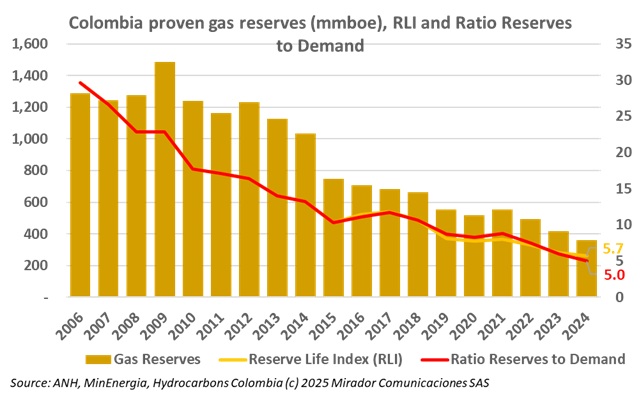Speaking at the XXII Colombian Petroleum, Gas, and Energy Congress, Rafael Guzmán, Ecopetrol’s (NYSE: EC) Vice President of Hydrocarbons, reflected on the resilience of the oil and gas industry and the lessons it continues to offer as Colombia navigates its energy future.
At the XXII Colombian Petroleum, Gas and Energy Congress, Orlando Velandia, President of the National Hydrocarbons Agency (ANH), outlined reforms aimed at unblocking suspended contracts and boosting efficiency in the oil and gas sector.
Colombia’s state-owned oil giant Ecopetrol (NYSE: EC) has begun a new logistics operation from the Port of Cartagena to export solid asphalt, aiming to expand its reach across Latin America.

Promigas released the 26th edition of its flagship Natural Gas Sector Report, offering a detailed snapshot of the challenges, milestones, and opportunities facing Colombia’s gas industry.
With declining domestic gas output and renewed talk of imports from Venezuela, Mónica de Greiff, Chair of Ecopetrol’s (NYSE: EC) Board of Directors, drew a clear red line: U.S. sanctions determine what Colombia’s state oil company can and cannot do.
Amid intensifying debates over Colombia’s energy transition, President Gustavo Petro renewed his call for Ecopetrol (NYSE: EC) to divest its stake in the Permian Basin oil field in Texas, operated jointly with Occidental Petroleum (OXY).